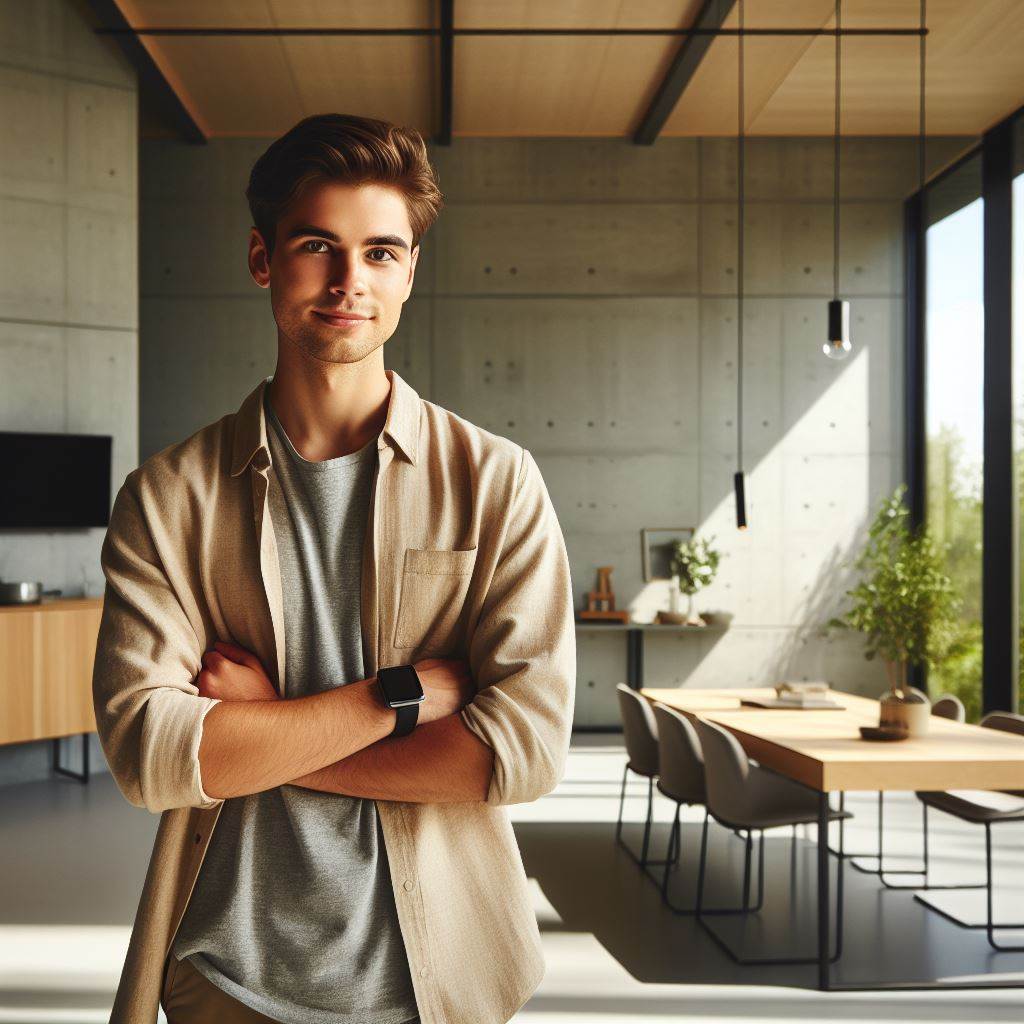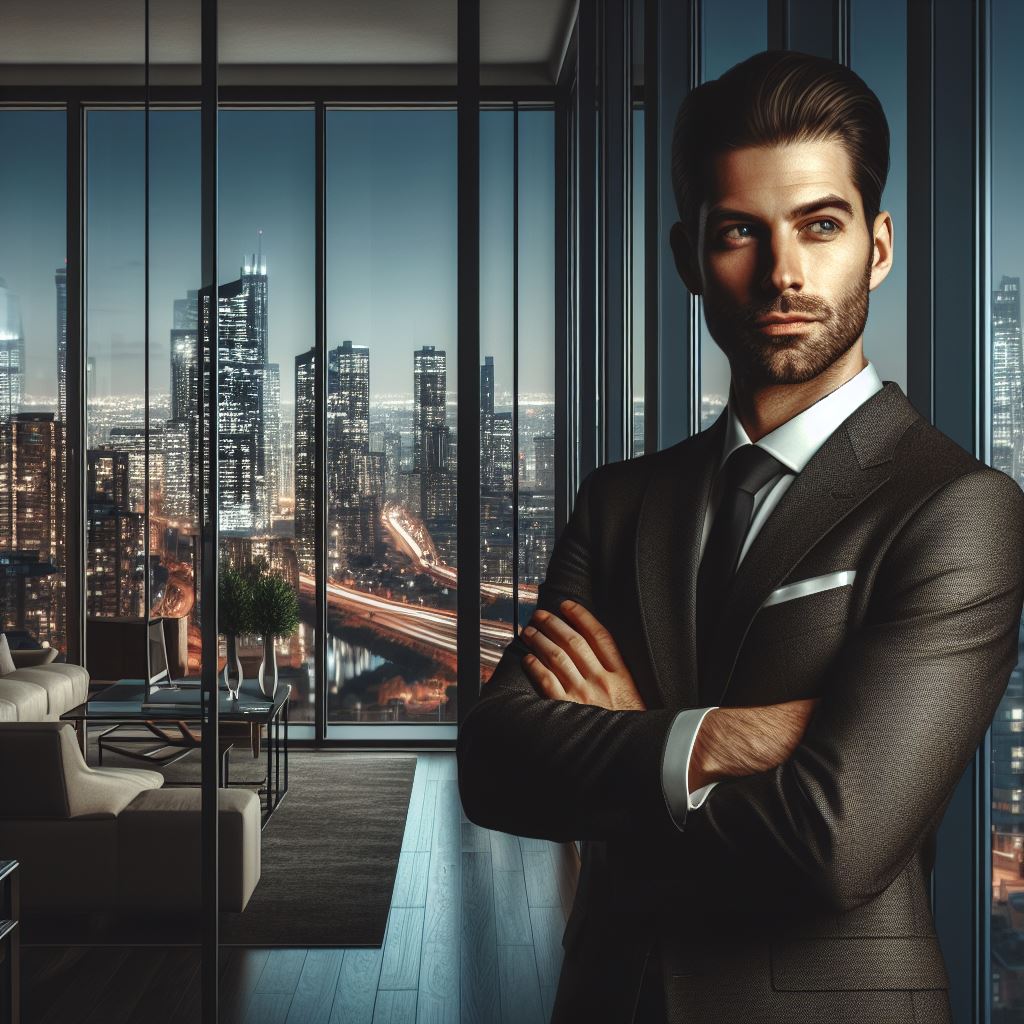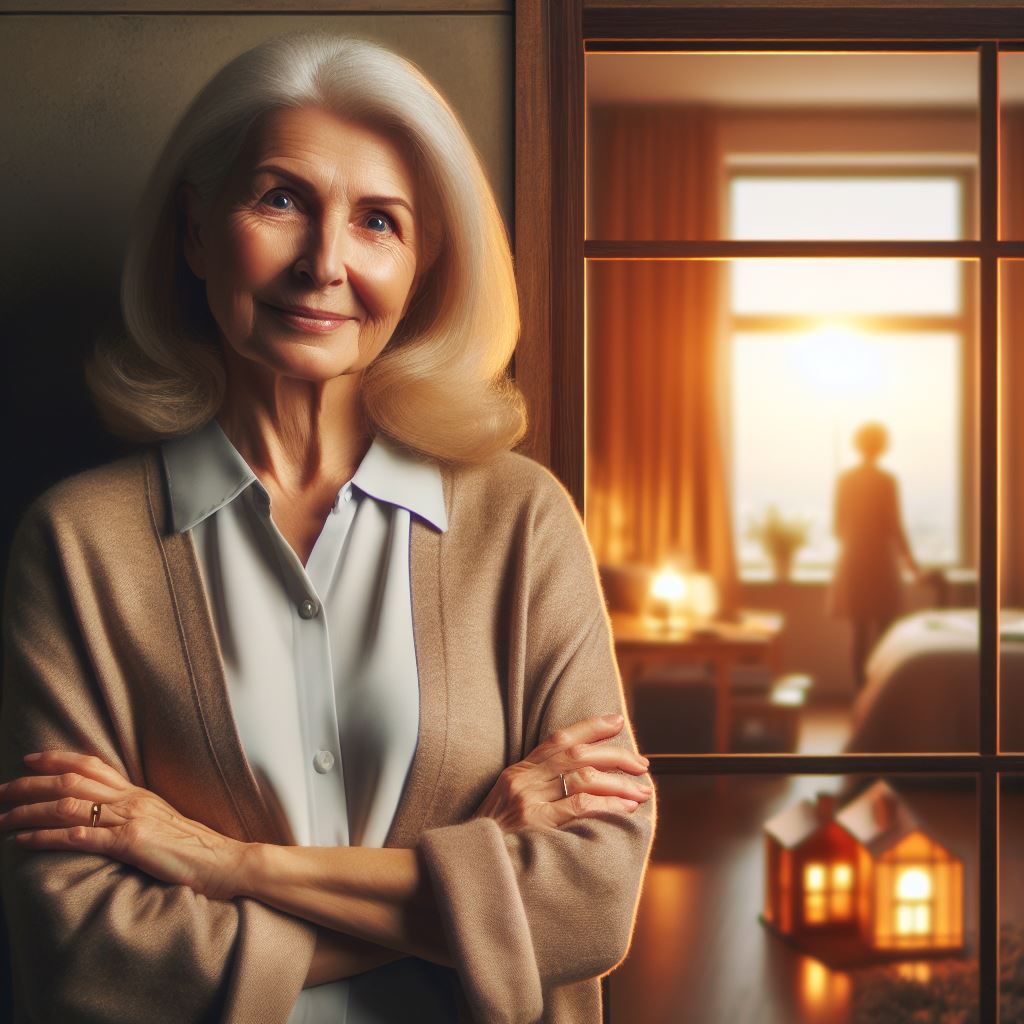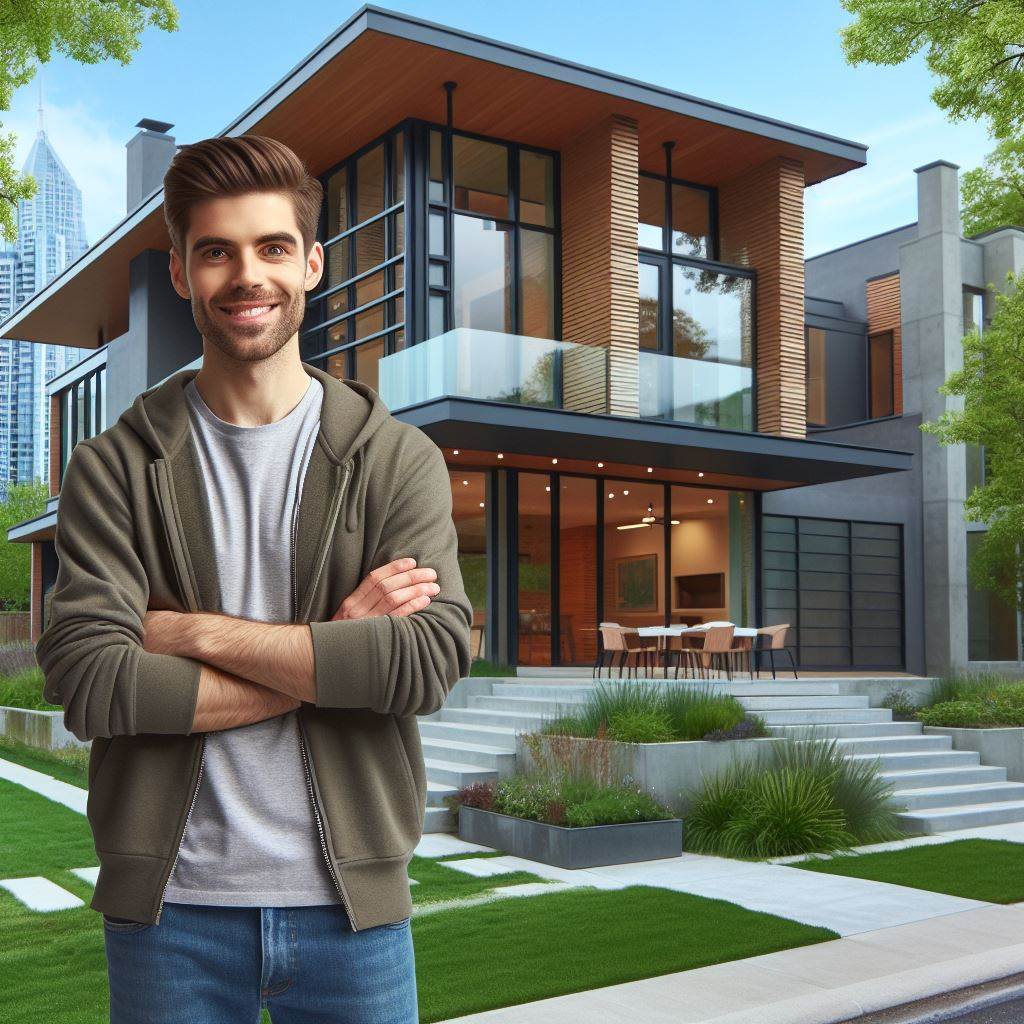Introduction
Eco-luxury homes redefine luxury by blending opulence with sustainability.
These high-end properties prioritize green features such as solar panels, water-saving fixtures, and energy-efficient appliances.
In recent years, there has been a significant increase in the popularity of green trends within the luxury real estate market.
High-end homeowners are now seeking eco-friendly homes that combine luxury with environmental consciousness.
The purpose of this blog post is to shed light on the concept of eco-luxury homes and delve into the reasons behind the growing interest in green trends among luxury homeowners.
Eco-luxury homes are revolutionizing the way we define luxury in the real estate industry.
These homes incorporate sustainable and energy-efficient technology without compromising on aesthetics or comfort.
The increasing popularity of green trends in high-end homes can be attributed to various factors.
Concern for the environment and a desire to reduce carbon footprint are driving homeowners to seek eco-friendly alternatives.
This blog post aims to educate readers on the concept of eco-luxury homes and highlight the tangible benefits of investing in sustainable living.
Luxury homeowners are recognizing the long-term value of eco-luxury homes, as they not only promote a greener lifestyle but also contribute to energy savings and reduced maintenance costs.
In fact, the rise of eco-luxury homes and the growing interest in green trends among high-end homeowners reflect a shift towards sustainable living and responsible luxury.
Benefits of Eco-Luxury Homes
Eco-luxury homes offer numerous benefits to both homeowners and the environment.
The utilization of these innovative and sustainable features provides exceptional advantages that justify the investment.
Environmental impact reduction
One of the primary benefits of eco-luxury homes is the significant reduction in environmental impact.
These homes are specifically designed to minimize energy consumption, water usage, and reliance on non-renewable resources.
- Energy efficiency: Eco-luxury homes utilize advanced technologies such as smart thermostats, energy-efficient appliances, and LED lighting.
- Water conservation: These homes are equipped with water-saving fixtures, rainwater harvesting systems, and efficient irrigation methods.
- Sustainable materials: Eco-luxury homes prioritize the use of sustainable, recycled, or reclaimed materials for construction, reducing the depletion of natural resources.
Health and well-being benefits
Apart from their positive impact on the environment, eco-luxury homes also offer several health and well-being benefits to residents.
These features contribute to a healthier and more comfortable living environment.
- Improved indoor air quality: Eco-luxury homes are equipped with air filtration systems that remove pollutants, allergens, and toxins, resulting in cleaner indoor air.
- Natural lighting and ventilation: The design of these homes incorporates large windows, skylights, and open-floor plans to maximize natural light and promote better air circulation.
- Connection with nature: Eco-luxury homes often have outdoor spaces, gardens, or rooftop terraces that allow residents to connect with nature and enjoy the benefits of greenery.
In short, eco-luxury homes not only prioritize reducing their environmental impact but also offer significant advantages to residents.
The use of energy-efficient technologies, sustainable materials, and the integration of nature-focused design elements contribute to a healthier, more comfortable, and sustainable living experience.
Investing in an eco-luxury home is not only a conscious decision for the planet but also a wise choice for personal well-being and long-term value.
Read: Luxury Market Trends: US Real Estate 2024
Sustainable Architectural Design
Integration of eco-friendly design principles
High-end homes are now integrating eco-friendly design principles into their architectural plans.
By incorporating these principles, homeowners can not only enjoy luxurious living spaces but also contribute to a sustainable future.
Passive solar design
A key aspect of sustainable architectural design is the implementation of passive solar design.
This design technique focuses on maximizing the use of natural sunlight to illuminate living spaces, reducing the need for artificial lighting during the day.
By strategically positioning windows and skylights, homeowners can create well-lit interiors that are both energy-efficient and visually appealing.
Use of natural and renewable materials
In eco-luxury homes, the use of natural and renewable materials is prioritized.
Instead of relying on synthetic materials that contribute to pollution and waste, architects and designers opt for sustainable alternatives.
Materials like bamboo, cork, and reclaimed woods are popular choices for flooring, furniture, and fixtures.
By using these materials, high-end homes minimize their environmental impact while providing a luxurious and organic living experience.
Proper insulation and thermal resistance:
Ensuring proper insulation and thermal resistance is crucial for the energy efficiency of a high-end home.
Sustainable architectural design prioritizes effective insulation methods like triple-glazed windows, insulated walls, and energy-efficient doors.
These measures regulate indoor temperature and minimize heat exchange with the external environment.
Proper insulation not only creates a comfortable living space but also reduces the need for excessive heating or cooling, resulting in significant energy savings.
Green roofing and living walls
Green roofing and living walls are innovative additions to eco-luxury homes.
They offer various benefits while enhancing the overall aesthetics and energy efficiency of the property.
Benefits of green roofs
Green roofs are living roof systems that are covered with vegetation and plants.
Besides adding a touch of nature to architectural design, they provide several advantages.
Green roofs improve air quality by filtering pollutants and carbon dioxide while releasing oxygen.
They also regulate temperature by providing natural insulation, reducing the need for excessive cooling or heating.
Furthermore, green roofs minimize stormwater runoff by absorbing rainwater, reducing the strain on drainage systems.
Incorporation of living walls
Living walls, also known as vertical gardens, are vertical structures covered with plants.
These walls not only enhance the visual appeal of high-end homes but also provide numerous environmental benefits.
Living walls help mitigate the urban heat island effect, regulate indoor air quality, and reduce noise pollution.
They also act as natural air purifiers, creating a healthier and more pleasant living environment.
Enhanced aesthetics and energy efficiency
By incorporating green roofing and living walls, eco-luxury homes achieve enhanced aesthetics and energy efficiency.
The lush greenery adds visual appeal and creates a harmonious blend with the surrounding environment.
Additionally, the natural insulation provided by green roofs and living walls helps maintain a comfortable temperature inside the home, reducing the need for excessive heating or cooling.
This leads to significant energy savings and a smaller carbon footprint.
In essence, sustainable architectural design principles, including passive solar design, the use of natural and renewable materials, and the incorporation of green roofing and living walls, are shaping the future of high-end homes.
By embracing these trends, homeowners can create luxurious living spaces that not only offer comfort and style but also contribute to a cleaner and greener planet.
Read: Real Estate Bubbles: US Cities to Watch in 2024
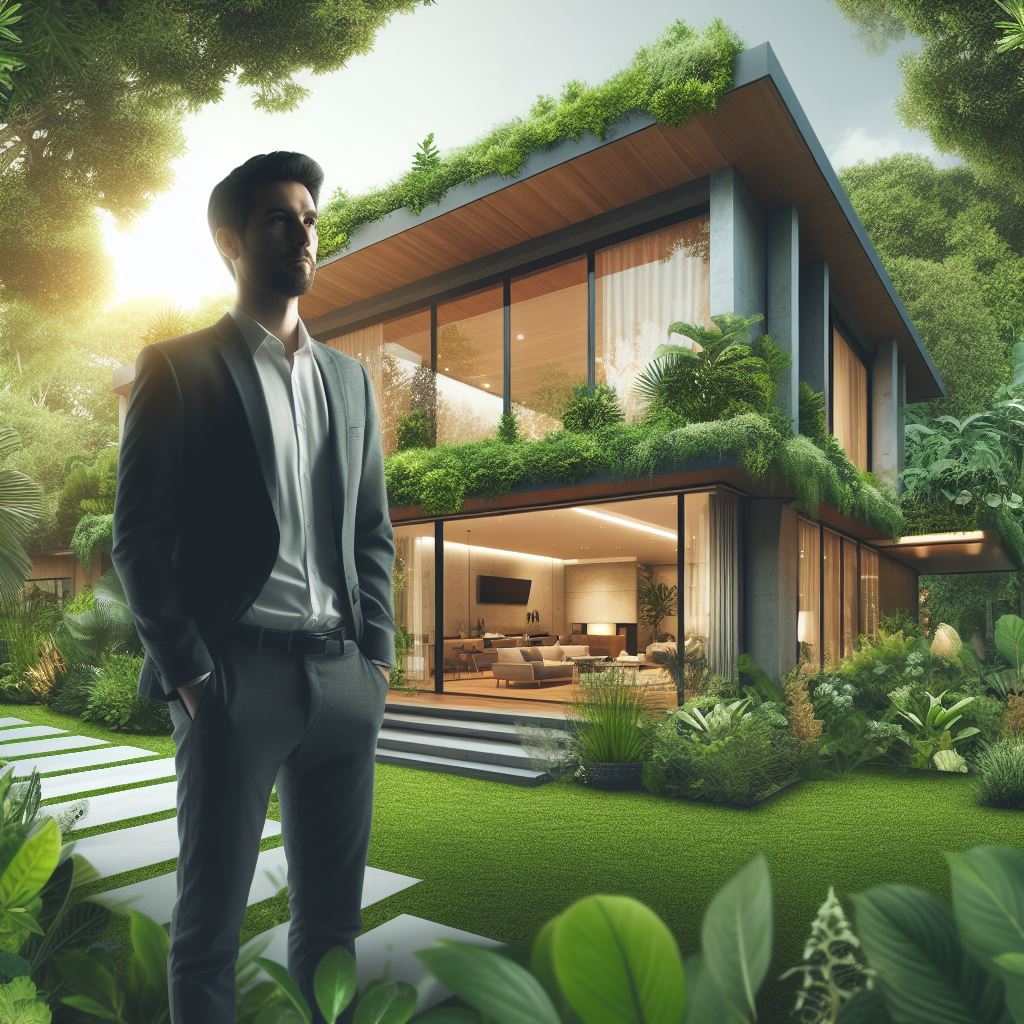
Eco-Friendly Technology
In the realm of eco-luxury homes, technology plays a pivotal role in minimizing environmental impact while maximizing comfort and efficiency.
From smart home automation to harnessing renewable energy sources, these advancements are revolutionizing the way high-end homes operate.
Smart Home Automation
- Energy Monitoring and Management Systems: Integrating sophisticated energy monitoring and management systems allows homeowners to track their energy consumption in real-time. By identifying energy-intensive areas, they can make informed decisions to optimize usage, ultimately reducing waste and costs.
- Advanced Lighting Controls: LED lighting controlled by advanced systems not only enhances ambiance but also conserves energy. Dimming options and motion sensors ensure that lights are only activated when needed, further decreasing electricity usage.
- Smart Thermostats for Efficient Heating and Cooling: With smart thermostats, temperature control becomes more precise and energy-efficient. These devices learn inhabitants’ preferences and adjust heating and cooling accordingly, ensuring comfort while minimizing energy wastage.
Renewable Energy Sources
- Solar Panels and Solar Water Heaters: Solar technology continues to be a hallmark of eco-luxury homes. Solar panels harness sunlight to generate electricity, while solar water heaters utilize the sun’s energy to provide hot water, reducing reliance on traditional energy sources.
- Geothermal Heating and Cooling Systems: Geothermal systems leverage the Earth’s natural heat to regulate indoor temperatures. By circulating fluid through underground pipes, these systems extract warmth in winter and dissipate excess heat in summer, offering consistent and efficient climate control.
- Wind Turbines for Power Generation: In select regions, wind turbines contribute to sustainable energy production. Integrated into the landscape, these turbines harness wind power to generate electricity, providing an eco-friendly alternative to conventional energy sources.
In a nutshell, eco-friendly technology lies at the heart of modern luxury homes, offering both environmental benefits and cutting-edge convenience.
By embracing innovations such as smart home automation and renewable energy sources, homeowners can reduce their ecological footprint without compromising on luxury or comfort.
As the demand for sustainable living continues to rise, integrating these technologies into high-end residences becomes not only a statement of sophistication but also a commitment to a greener future.
Read: Investing in Rentals: 2024 Strategies
Eco-Luxury Amenities
Eco-luxury homes go beyond traditional luxury, incorporating sustainable and eco-friendly amenities that reflect a commitment to environmental conservation.
These features not only enhance the residents’ quality of life but also minimize the home’s impact on the planet.
Sustainable landscaping
A key aspect of eco-luxury homes is sustainable landscaping.
By carefully selecting native plants, homeowners can reduce their water consumption and lower maintenance requirements.
Native plants are adapted to the local climate, reducing the need for excessive watering and chemical treatments.
Additionally, incorporating rainwater harvesting systems allows homeowners to collect and reuse rainwater for irrigation, reducing reliance on traditional water sources.
Furthermore, eco-luxury homes often embrace organic gardening and edible landscapes.
Growing fruits, vegetables, and herbs organically ensures that residents have access to healthy, chemical-free produce.
Edible landscapes not only provide fresh food but also enhance the aesthetic appeal of the property, creating a harmonious blend of functionality and beauty.
Wellness features
In addition to sustainable landscaping, wellness features play a significant role in eco-luxury homes.
Homeowners are increasingly prioritizing their well-being, and these homes offer amenities that promote a healthy lifestyle.
Home gyms equipped with energy-producing equipment allow residents to exercise while generating electricity, reducing their carbon footprint.
This innovative approach not only benefits the environment but also helps homeowners save on their energy bills.
Spa-like bathrooms with sustainable fixtures are another popular feature of eco-luxury homes.
By installing low-flow toilets, faucets, and showerheads, homeowners can significantly reduce water consumption without sacrificing comfort.
Eco-friendly materials, such as bamboo flooring and recycled glass countertops, create a serene and eco-conscious atmosphere in these spaces.
Moreover, many eco-luxury homes include designated meditation spaces and wellness rooms.
These areas provide a tranquil environment for residents to practice mindfulness and relaxation techniques.
Whether it’s a secluded outdoor garden or a cozy indoor retreat, these spaces encourage self-care and contribute to overall well-being.
All in all, eco-luxury amenities in high-end homes prioritize sustainability, wellness, and environmental consciousness.
Through sustainable landscaping practices and the incorporation of wellness features, homeowners can enjoy a luxurious lifestyle while minimizing their ecological impact.
As the demand for eco-friendly living continues to rise, these amenities are becoming essential aspects of modern luxury homes.
By investing in eco-luxury, homeowners not only enhance their own quality of life but also contribute to a healthier and more sustainable future for the planet.
Read: Coastal Property Prices: 2024 Market Analysis
Market Trends and Demand
As awareness of environmental issues continues to grow, the demand for eco-luxury homes is experiencing a noticeable surge.
People are becoming increasingly conscious of their ecological footprint and are actively seeking ways to minimize their impact on the planet.
This shift towards sustainable living has created a significant market trend, with more buyers seeking out homes that incorporate eco-friendly features and technologies.
Growing demand for eco-luxury homes
One of the key driving forces behind the growing demand for eco-luxury homes is the emergence of millennial and affluent buyers who prioritize sustainability in their lifestyles.
With their increased purchasing power, these buyers are opting for properties that not only offer luxury and comfort but also align with their environmental values.
They are specifically looking for homes that feature energy-efficient appliances, solar panels, recycled materials, and other environmentally conscious elements.
Moreover, the rise in certifications and green building standards has further fueled the demand for eco-luxury homes.
Certifications like LEED (Leadership in Energy and Environmental Design) provide assurance to buyers that a property has been designed and constructed using environmentally responsible practices.
These certifications not only validate the eco-friendly aspects of a home but also serve as a valuable marketing tool for sellers.
When it comes to high-end listings, incorporating eco-friendly features can significantly enhance the value and marketability of the property.
Energy-efficient homes typically have lower utility costs, making them desirable for buyers looking for long-term savings.
Additionally, eco-luxury homes are viewed as symbols of prestige and status among affluent buyers who strive to make a positive impact on the planet.
Importance of eco-friendly features in high-end listings
Developers and real estate agents have recognized the importance of positioning eco-friendly features as unique selling points in high-end listings.
Features like smart home technology, rainwater harvesting systems, and sustainable landscaping not only provide environmental benefits but also appeal to luxury buyers who seek innovation and convenience in their homes.
Furthermore, the integration of eco-luxury homes with sustainable communities and lifestyles adds to their appeal.
Buyers who are committed to reducing their carbon footprint are attracted to neighborhoods that offer green spaces, eco-friendly transportation options, and access to organic markets or local produce.
The desire to be part of a like-minded community has become a key factor in the decision-making process for eco-conscious buyers.
Therefore, the market trends and demand for eco-luxury homes are witnessing rapid growth.
The shift towards sustainable living, the preferences of millennial and affluent buyers, and the increase in certifications and green building standards have all contributed to the rise in demand.
The inclusion of eco-friendly features not only adds value and marketability to high-end listings but also positions them as luxury status symbols.
As the focus on sustainability deepens, integrating with sustainable communities and lifestyles has become a key consideration for eco-conscious buyers.
Conclusion
Throughout this blog post, we have explored the various eco-luxury trends that are becoming increasingly popular in high-end homes.
From sustainable building materials to energy-efficient appliances, luxury real estate is embracing environmentally friendly options.
We encourage homeowners and homebuyers to consider eco-friendly options when it comes to designing, building, or purchasing a high-end home.
Not only do these choices contribute to a healthier planet, but they also provide a more sustainable and efficient living environment.
The future of luxury real estate lies in the integration of sustainability.
As awareness and demand for eco-luxury homes continue to rise, we can expect to see even more innovative and environmentally conscious features in high-end properties.
As our understanding of the environmental impact of traditional luxury homes grows, so does the desire to create residences that are both opulent and eco-friendly.
In the coming years, luxury homes will not only impress with their aesthetics but also through their commitment to sustainability.
Embracing eco-luxury in high-end homes is not only a responsibility but also an opportunity to create a better world for future generations.

